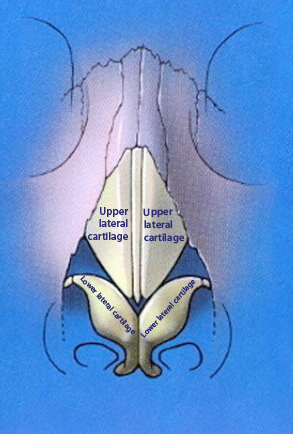Surgical Breathe Right Strips
Surgical breathe right strips
Find out how to quit using Breathe Right strips by having functional rhinoplasty to permanently open up internal or external nasal valve narrowing and improve chronic nasal congestion.
Many people with chronic nasal blockage find that they can improve their nasal airflow by wearing Breathe Right Strips. These adhesive strips can be a viable way to open up the internal nasal airway and decrease congestion symptoms. Most people limit wearing these strips to bedtime (or on the sports field) so they have persistent breathing problems once they take the Breathe Right strip off.
Wouldn't it be great if you could have the nasal breathing improvement that breathe right strips give you -- permanently?
How do Breathe Right Strips work?
To see how nasal surgery can create durable nasal congestion correction one must look at how Breathe Right Strips work in the first place. Breathe Right Strips work by springing open the upper lateral cartilages (internal nasal valve) and/or lower lateral cartilages (external nasal valve) thereby widening the internal and external nasal valves. You can see where these cartilages are located in this schematic:

The internal nasal valve is the narrowest section of the entire upper airway. Relatively small changes (as little as a millimeter) to the area of the valve can lead to perceptible changes to nasal airflow and the sensation of impoved nasal breathing.
Alternatives to Breathe Right strips
So what can you do if you find that Breathe Right Strips improve your breathing, but you'd rather have a permanent solution to your breathing problems? To find the appropriate surgical solution for nasal valve narrowing one must determine which area or areas need to be addressed.
Dynamic external nasal valve collapse
Some people have external nasal valve collapse only when they take a deep breath in through their nose. This dynamic external valve collapse can be treated using alar batten grafts. This involves placing cartilage grafts along the nasal sidewall to strengthen the tissue in the area and preventing collapse of the nose. Learn more about alar batten grafts here.
Static external valve collapse
Other people will have a baseline collapse or narrowing of the external nasal valves even when not taking in a deep breath through the nose. In some cases this can result from over-aggressive rhinoplasty surgery, but in many other cases it results from congenitally weak or malpostioned lower lateral cartilages. This malposition can include internal re-curvature of the LLCs where the lateral ends of the cartilage curve back into the internal nasal airway or cephalic malposition where the lower lateral cartilages are angled too far upward and don't support the nasal sidewalls properly.
With static external valve collapse alar batten grafts may be used to correct the structural deficiency. In other cases it may be best to reposition cephalically positioned LLCs more laterally or treat LLC re-curvature using LLC strut grafts.
Internal valve collapse
Treatment of internal nasal valve collapse is done using spreader grafts. These cartilage grafts are inserted between narrowed or collapsed upper lateral cartilages and the septum to provide the required level of lateralization, thereby opening up the internal nasal airway and improving nasal breathing. They are typically sutured into place using dissolvable sutures to keep them in proper position until the nose heals. Learn more about spreader grafts here.

Meet Plastic Surgeon, Dr. Lamperti
Dr. Lamperti, a Seattle rhinoplasty super-specialist, has devoted his career to treatments of the head, face and neck. He feels that by focusing his plastic surgery endeavors solely to the face he is best able to provide the excellent results his patients desire.
Interested in learning more about having a Rhinoplasty Treatment in Seattle with Dr. Lamperti?
Contact us to have a private consultation or view Before & After photos here.